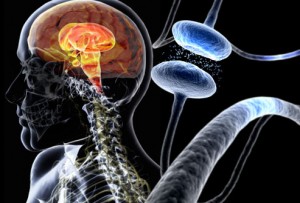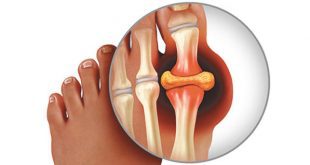By Ramon Gil, M.D. –


A: PD is a chronic neurodegenerative disorder affecting 1% of the population over the age of 60 and 2% over the age of 70. According to the U.S. Census Bureau, in the year 2008, 12.8% of the population in this country was 65 and older, versus 17.4% in Florida and around 30% in Charlotte and Sarasota Counties, closely followed by Lee and Collier.
Several conditions related to PD affect the same age group. One of them is Lewy Body Disease (LBD). LBD is considered the second most common cause of dementia in the elderly, only preceded by Alzheimer’s disease. Early and correct diagnosis of these conditions is critical to provide patients with the most effective forms of treatment, and to assure the best outcomes, for both patients and care partners. Nothing is more frustrating and disappointing as to find out after several years of ineffective drug therapy that: “It was not PD, but an imitator.”
Q. What is the best treatment for PD?
A. Unfortunately, there is no definitive answer. The variability in the clinical expression of this disease makes each case different. The medications used depend on many different factors, including: age of onset, most prominent clinical features, degree of functional impairment, the person’s overall health status and presence or absence of cognitive problems.
The concept of “It is too early to start treatment…”, “Come back when your symptoms are worse…” should be no longer accepted. Rasagiline (Azilect) proved to benefit patients with early disease as mono therapy. Several well designed clinical trials demonstrated the benefits of this drug, including strong suggestions of disease modifying effect, possibly via a “neuroprotective effect”.
As with Zydis Selegiline (Zelapar), another second generation MAO-B inhibitor, Azilect is also approved for advanced disease. Patients with early disease, whose symptoms are bothersome or to some extent disabling, unless contraindicated for other reasons, should be considered for the use of “Dopamine Agonists” (DA) before the introduction of the “gold standard” drug, Levodopa (LD).
Q. What is “Continuous Dopaminergic Stimulation” (CDS)?
A. It is known that fluctuating plasma levels of levodopa (LD) are associated with earlier onset of motor complications, known as “dyskinesias”. LD, even though it remains as the “gold standard” treatment and is considered the most effective symptomatic drug, has a number of disadvantages, one of them being its short half life, the reason for which it requires at least 3 to 5 doses a day. This leads to a “pulsatile stimulation” of the dopamine receptors in the brain becoming “hypersensitive” and unable to provide smooth response, but complicated by the presence of involuntary, twisting movements of the trunk, neck, limbs and/or facial grimacing (dyskinesias).
It has been demonstrated that continuous, rather than pulsatile, stimulation significantly reduces the severity of these movements. The use of longer acting drugs, such as DA, for the treatment of early disease has significantly delayed the onset of these motor problems, when compared to those patients treated with LD as the initial drug. Once a day Ropinirole (Requip XL) and Extended release Pramipexole (Mirapex ER) in selected patients, in many ways, are ideal drugs to use to maximize CDS.
Catechol O Methyl Transferase (COMT) Inhibitors have been demonstrated to be a rather effective way to improve the response to LD. Two FDA approved drugs are currently available: Comtan (Entacapone) and Tasmar (Tolcapone). Because of the very similar pharmacokinetic profiles of LD and Entacapone, they were able to be combined in a single pill: Stalevo. Carbidopa, levodopa and a COMT inhibitor is also known as “triple combination”
A ew formulation of Carbidopa/Levodopa (IPX-066) is in the process of being approved by the FDA. The duration of the effect is much longer than for the currently available formulation, and even when compared with the “triple combination”, IPX-066 may demonstrate superiority. We used this drug in three different sets of patients, as we participated in three phase III trials. Subjects enrolled demonstrated excellent response and what appears to be excellent CDS utilizing levodopa in a “double combination”. We expect this drug to be approved and available in 2012.
Q. Does CDS help with the problems associated with “wearing off”?
A. Yes. Patients receiving effective dopaminergic stimulation should have, for the most part, a satisfactory response. The functional impairment should be diminished and the quality of life (QOL) improved. This is not a secret, and it has been demonstrated in numerous clinical trials.
It is important to understand, that as the disease progresses, the loss of dopaminergic cells in the Substantia Nigra limits the ability of the brain to compensate the reduced dopamine levels. Patients, thus, will depend more on their medications and timing becomes increasingly critical for optimal response.
Q. How soon during the course of PD do “motor complications” appear?
A. Studies demonstrated that within 2 years from the introduction of LD, as many as 30% of patients will experience dyskinesias, and 40 to 50% will experience “wearing off”. Furthermore, the incidence, after 4 years on LD, seems to increase by 10% per year.
These figures may be better now, due to the availability of better drugs than in the late 1990’s when this information was generated. Drugs like MAO-B inhibitors, better and more rationale use of levodopa, the wide use of DA, are all positive interventions delaying the onset of motor complications.
Q. What is new in the field of surgical treatment of PD?
A. In January of 2007, the results of a study conducted in Europe were published in “Neurology”. Twenty patients with PD were involved in the study. They all had similar characteristics, such as: disease duration of 5 to 10 years, and presence of mild motor fluctuations. They were all younger than 50 years of age and they had to be holding a full time job.
Patients were randomized into two groups: one to continue best medical treatment, and the other to undergo bilateral deep brain stimulators (DBS) placement and to have the medications, as well as the DBS, adjusted accordingly.
The results favored surgery, with QOL improving 24% versus slight worsening in the medically treated patients. All motor scores were better for the surgical group when compared at 6, 12 and 18 months. Surgical patients enjoyed a reduction in the doses of medications of 57% by 18 months versus an increase by 12% in the medical group. Furthermore, the clinical improvement (including reduction of “off” time and dyskinesias) was significant and maintained all along. At the end of the study, 80% of the subjects in the medical group elected to undergo bilateral DBS placement. Following this publication, another similar study was conducted in this country with almost identical results. (JAMA January, 2009).
These studies demonstrated the benefits of surgical treatment in patients with relatively mild complications, or mild to moderate motor symptoms. Now, we have objective evidence not to wait for patients to experience severe motor complications or significant disability to consider surgery. The benefits are quite obvious, however, a patient’s selection is critical as well as the expertise of the treating neurologist adjusting the medications following DBS placements and programming the DBS units.
Specializing in Internal Medicine and Neurology, please contact Dr. Ramon Gil to learn more about the treatment of Parkinson’s disease, 941-743-4987.
Ramon A. Gil, M.D.
Medical Director, Parkinson’s Disease
Parkinson’s Disease Treatment Center of SW Florida
Call 941.743.4987
 Southwest Florida's Health and Wellness Magazine Health and Wellness Articles
Southwest Florida's Health and Wellness Magazine Health and Wellness Articles

